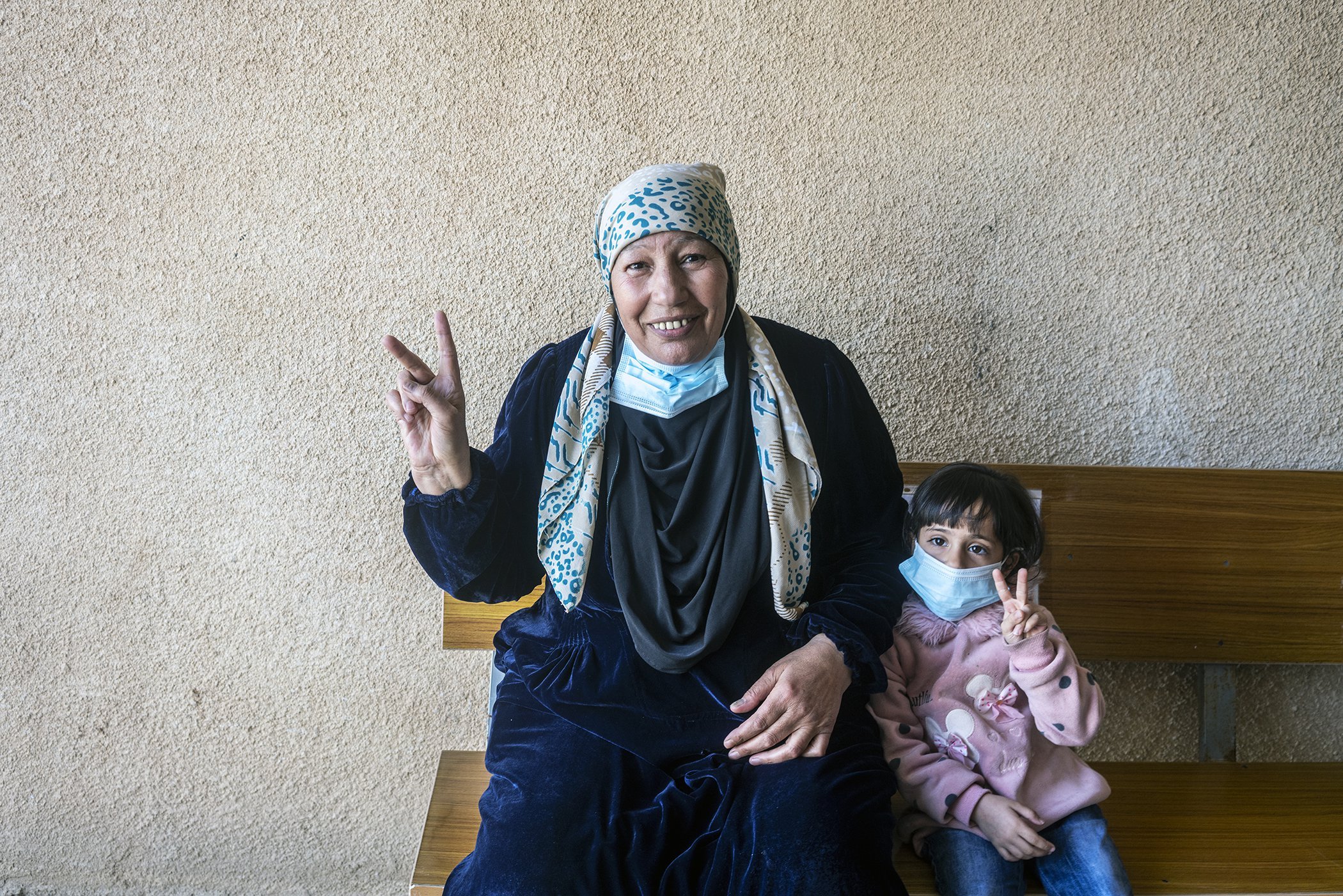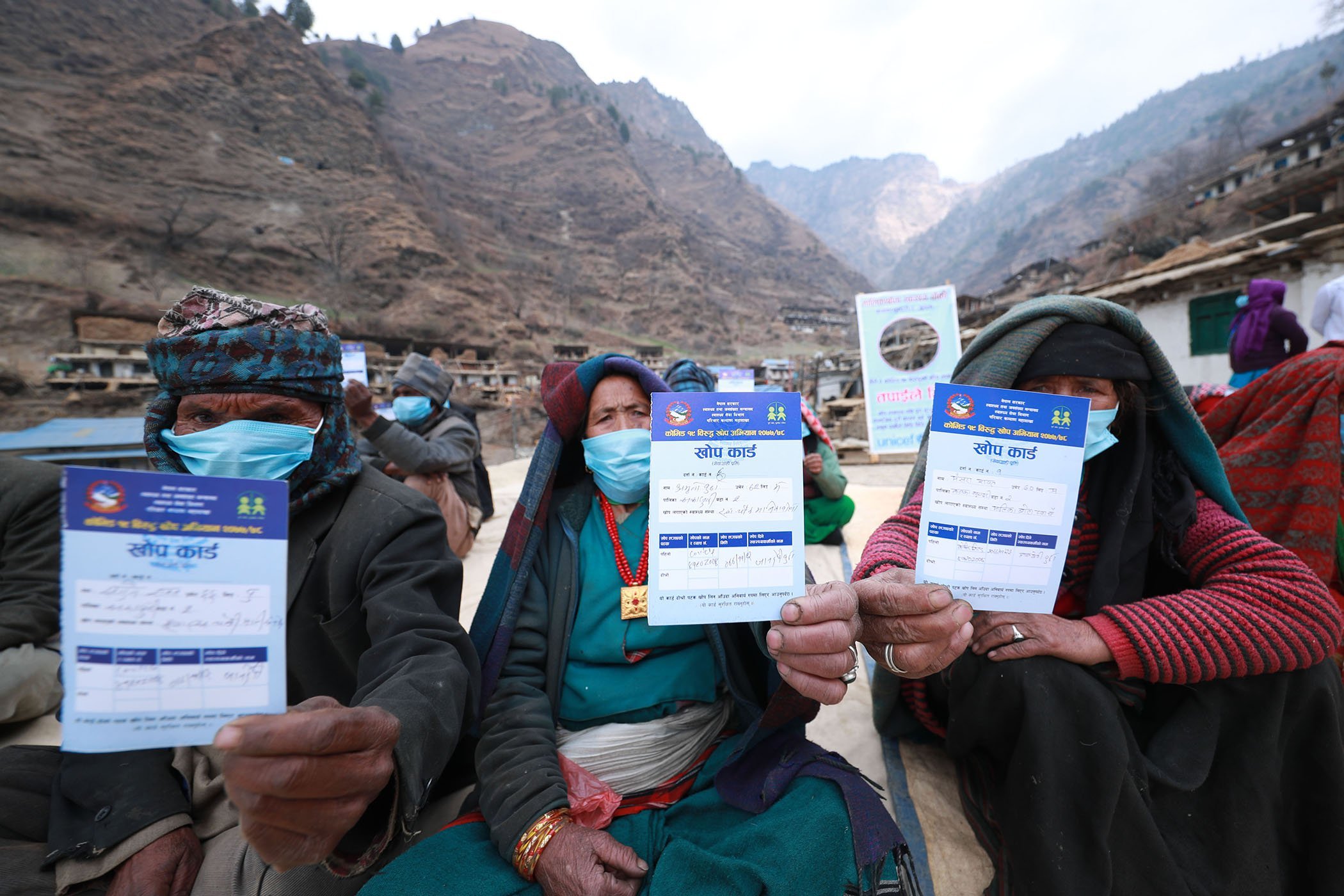Ha transcurrido más de un año desde que la pandemia del COVID-19 alteró nuestras vidas.
Después de un año devastador de pérdidas, dolor y desigualdad creciente, el desarrollo de la vacuna ha brindado finalmente un destello de esperanza a las comunidades. Cientos de miles de personas en el mundo acuden a estadios y parques de diversiones, convertidos en sitios de vacunación para recibir la vacuna.
Las vacunas nos acercan más al fin de la pandemia y la distribución global nos ha dado razones para esperar con anhelo el resultado. Pero solo lo lograremos si estos recursos vitales estás disponibles para todos, en especial para los más vulnerables del mundo.
Si bien, más de la mitad de adultos estadounidenses han recibido ya una dosis de la vacuna del COVID-19, los índices de inmunización siguen siendo desiguales, en particular en los países de bajos ingresos. Esto supone una amenaza seria ya que podríamos presenciar el surgimiento de nuevas cepas resistentes y la pandemia podría prolongarse para todos, advierte la Organización Mundial de la Salud (OMS).
Esta Semana de Inmunización Mundial únete a nosotros mientras exhortamos a los líderes mundiales a fomentar la equidad en las vacunas y celebramos el potencial vital de las vacunas eficaces y seguras. A continuación presentamos una mirada a la campaña más grande de vacunación en la historia con 16 fotos conmovedoras, cortesía del Fondo de Naciones Unidas para la Infancia (UNICEF). Mongolia received over 25,000 doses of the Pfizer/BioNTech COVID-19 vaccine from the COVAX Facility, a partnership between CEPI, Gavi, the Vaccine Alliance, UNICEF and World Health Organization in March 2021.
Mongolia received over 25,000 doses of the Pfizer/BioNTech COVID-19 vaccine from the COVAX Facility, a partnership between CEPI, Gavi, the Vaccine Alliance, UNICEF and World Health Organization in March 2021.
Mongolia received over 25,000 doses of the Pfizer/BioNTech COVID-19 vaccine from the COVAX Facility, a partnership between CEPI, Gavi, the Vaccine Alliance, UNICEF and World Health Organization in March 2021.
 Adults start to receive COVID-19 vaccines in Lima, Peru on March 24, 2021. Peru received its first COVAX shipment of 117,000 Pfizer/BioNTech doses earlier in March, with the first phase prioritizing frontline workers and people 60 years or older.
Adults start to receive COVID-19 vaccines in Lima, Peru on March 24, 2021. Peru received its first COVAX shipment of 117,000 Pfizer/BioNTech doses earlier in March, with the first phase prioritizing frontline workers and people 60 years or older.
Adults start to receive COVID-19 vaccines in Lima, Peru on March 24, 2021. Peru received its first COVAX shipment of 117,000 Pfizer/BioNTech doses earlier in March, with the first phase prioritizing frontline workers and people 60 years or older.
 Dr. Emmanuel Addipa-Adapoesho shows a vaccination card after receiving the AstraZeneca/Oxford COVID-19 vaccine in March 2021. "As a physician, we have taken an oath to protect and save lives, so I am ready for this," said Dr. Addipa-Adapoe.
Dr. Emmanuel Addipa-Adapoesho shows a vaccination card after receiving the AstraZeneca/Oxford COVID-19 vaccine in March 2021. "As a physician, we have taken an oath to protect and save lives, so I am ready for this," said Dr. Addipa-Adapoe.
Dr. Emmanuel Addipa-Adapoesho shows a vaccination card after receiving the AstraZeneca/Oxford COVID-19 vaccine in March 2021. "As a physician, we have taken an oath to protect and save lives, so I am ready for this," said Dr. Addipa-Adapoe.
 Aziza Barakzai recieves the COVID-19 vaccine facilitated by COVAX in Afghanistan, March 16, 2021. Barakzai is the head teacher at the Al-Fateh girls’ high school in Kabul and teachers in Afghanistan were eligible to receive the vaccine.
Aziza Barakzai recieves the COVID-19 vaccine facilitated by COVAX in Afghanistan, March 16, 2021. Barakzai is the head teacher at the Al-Fateh girls’ high school in Kabul and teachers in Afghanistan were eligible to receive the vaccine.
Aziza Barakzai recieves the COVID-19 vaccine facilitated by COVAX in Afghanistan, March 16, 2021. Barakzai is the head teacher at the Al-Fateh girls’ high school in Kabul and teachers in Afghanistan were eligible to receive the vaccine.
 Dr. Eric Hungu, a surgeon at Kenyatta National Hospital, is seen after receiving the COVID-19 vaccine in Nairobi, Kenya on March 5, 2021. “This vaccine protects myself, my patients and my family form COVID-19. I am looking forward to the second dose.”
Dr. Eric Hungu, a surgeon at Kenyatta National Hospital, is seen after receiving the COVID-19 vaccine in Nairobi, Kenya on March 5, 2021. “This vaccine protects myself, my patients and my family form COVID-19. I am looking forward to the second dose.”
Dr. Eric Hungu, a surgeon at Kenyatta National Hospital, is seen after receiving the COVID-19 vaccine in Nairobi, Kenya on March 5, 2021. “This vaccine protects myself, my patients and my family form COVID-19. I am looking forward to the second dose.”
 An elderly local resident of the remote Kankasundari area in Jumla District in Nepal, receives the COVID-19 vaccine at the hands of nurse Jandevi Budha at the Malikabota Health Post on March 7, 2021.
An elderly local resident of the remote Kankasundari area in Jumla District in Nepal, receives the COVID-19 vaccine at the hands of nurse Jandevi Budha at the Malikabota Health Post on March 7, 2021.
An elderly local resident of the remote Kankasundari area in Jumla District in Nepal, receives the COVID-19 vaccine at the hands of nurse Jandevi Budha at the Malikabota Health Post on March 7, 2021. The Government of Nepal has launched the second phase of the vaccination campaign targeting those who are most vulnerable to developing severe illness from COVID-19 including the elderly and people with comorbidities.
 In Sri Lanka, officials maintain the cold chain for the AstraZeneca as they bring the vaccine to a clinic targeted for the 60+ population.
In Sri Lanka, officials maintain the cold chain for the AstraZeneca as they bring the vaccine to a clinic targeted for the 60+ population.
In Sri Lanka, officials maintain the cold chain for the AstraZeneca as they bring the vaccine to a clinic targeted for the 60+ population.
 Porters carry COVID-19 vaccines to health facilities in Jumla District in Nepal’s remote far-west region on March 5, 2021.
Porters carry COVID-19 vaccines to health facilities in Jumla District in Nepal’s remote far-west region on March 5, 2021.
Porters carry COVID-19 vaccines to health facilities in Jumla District in Nepal’s remote far-west region on March 5, 2021.
 Doses of the COVID-19 vaccine are handled in Bukavu, South Kivu Province, DR Congo on April 22, 2021. Through the COVAX initiative, 41,000 doses of the vaccine against COVID-19 arrived in Bukavu.
Doses of the COVID-19 vaccine are handled in Bukavu, South Kivu Province, DR Congo on April 22, 2021. Through the COVAX initiative, 41,000 doses of the vaccine against COVID-19 arrived in Bukavu.
Doses of the COVID-19 vaccine are handled in Bukavu, South Kivu Province, DR Congo on April 22, 2021. Through the COVAX initiative, 41,000 doses of the vaccine against COVID-19 arrived in Bukavu.


 UNICEF and Buvuma District Health teams take a 30-minute boat road to Namatale Health Centre III, Namatale Island, Buvuma District on March 22, 2021 for a COVID-19 vaccination outreach. Health workers must transverse the 52 islands in the area by boats.
UNICEF and Buvuma District Health teams take a 30-minute boat road to Namatale Health Centre III, Namatale Island, Buvuma District on March 22, 2021 for a COVID-19 vaccination outreach. Health workers must transverse the 52 islands in the area by boats.
UNICEF and Buvuma District Health teams take a 30-minute boat road to Namatale Health Centre III, Namatale Island, Buvuma District on March 22, 2021 for a COVID-19 vaccination outreach. Health workers must transverse the 52 islands in the area by boats. Uganda received the first consignment of 864,000 doses of AstraZeneca COVID-19 vaccines on March 5, 2021. The vaccines were procured by the COVAX Facility. UNICEF is handling the procurement and delivery of the vaccines and related supplies on behalf of the COVAX Facility.
 AstraZeneca/Oxford COVID-19 vaccines are loaded onto waiting vehicles on March 4, 2021 in Rwanda.
AstraZeneca/Oxford COVID-19 vaccines are loaded onto waiting vehicles on March 4, 2021 in Rwanda.
AstraZeneca/Oxford COVID-19 vaccines are loaded onto waiting vehicles on March 4, 2021 in Rwanda.
 Munta Hussen, 26, is photographed as she receives her first COVID-19 vaccine while her son looks on, in Ethiopia, April 2021.
Munta Hussen, 26, is photographed as she receives her first COVID-19 vaccine while her son looks on, in Ethiopia, April 2021.
Munta Hussen, 26, is photographed as she receives her first COVID-19 vaccine while her son looks on, in Ethiopia, April 2021.
 Health care workers are vaccinated against COVID-19 in Sudan. The vaccines were delivered with UNICEF’s support through COVAX and the first phase of the campaign will target health care workers and persons 45 years or older with chronic illnesses.
Health care workers are vaccinated against COVID-19 in Sudan. The vaccines were delivered with UNICEF’s support through COVAX and the first phase of the campaign will target health care workers and persons 45 years or older with chronic illnesses.
Health care workers are vaccinated against COVID-19 in Sudan. The vaccines were delivered with UNICEF’s support through COVAX and the first phase of the campaign will target health care workers and persons 45 years or older with chronic illnesses.
 Health care worker Issac Lemi Beshir receives his COVID-19 jab during the launch of the vaccination drive at Juba Teaching Hospital. South Sudan received 132,000 doses of the AstraZeneca COVID-19 vaccine through the COVAX facility on March 25, 2021.
Health care worker Issac Lemi Beshir receives his COVID-19 jab during the launch of the vaccination drive at Juba Teaching Hospital. South Sudan received 132,000 doses of the AstraZeneca COVID-19 vaccine through the COVAX facility on March 25, 2021.
Health care worker Issac Lemi Beshir receives his COVID-19 jab during the launch of the vaccination drive at Juba Teaching Hospital. South Sudan received 132,000 doses of the AstraZeneca COVID-19 vaccine through the COVAX facility on March 25, 2021.